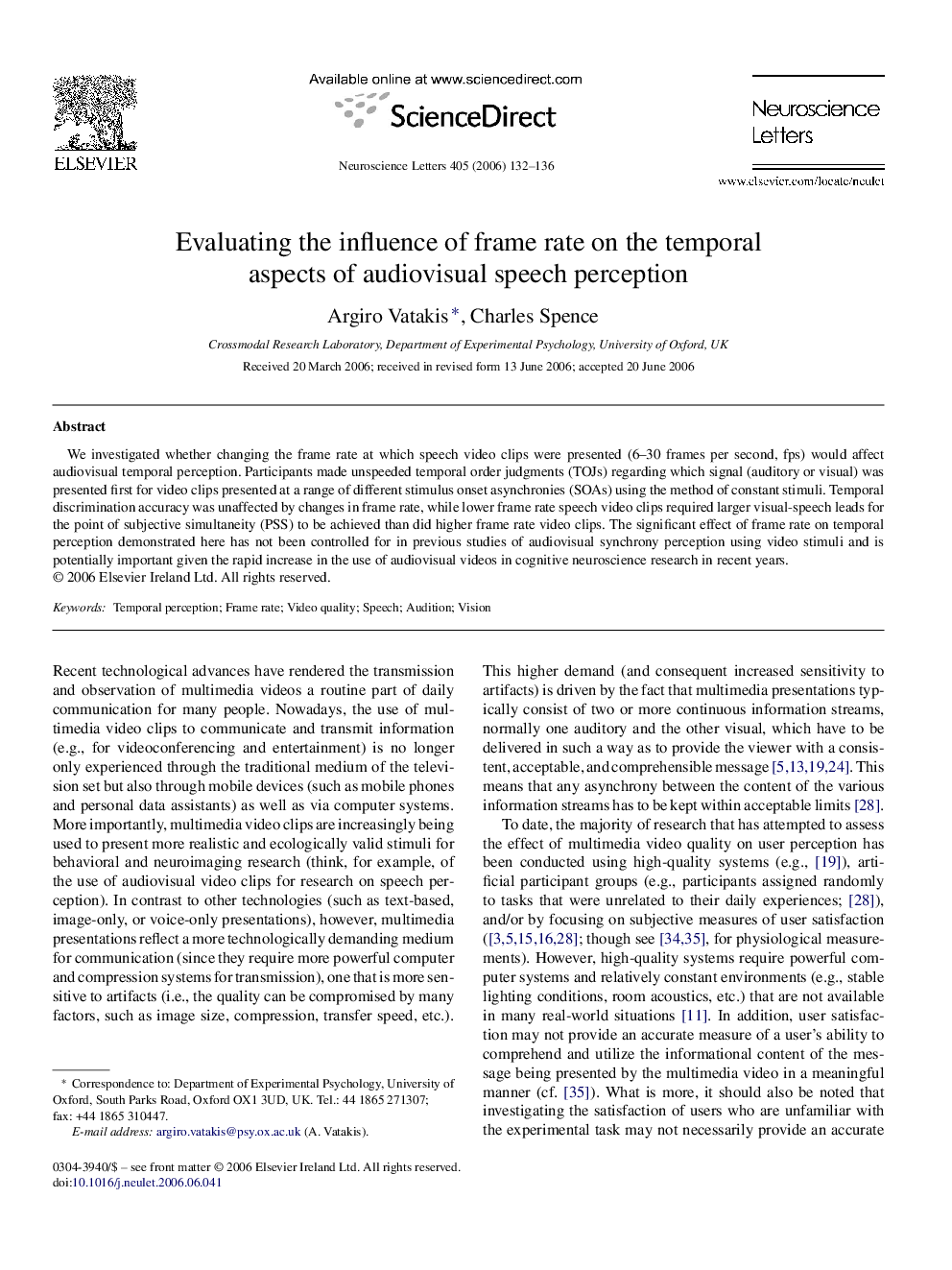| Article ID | Journal | Published Year | Pages | File Type |
|---|---|---|---|---|
| 4350213 | Neuroscience Letters | 2006 | 5 Pages |
Abstract
We investigated whether changing the frame rate at which speech video clips were presented (6-30 frames per second, fps) would affect audiovisual temporal perception. Participants made unspeeded temporal order judgments (TOJs) regarding which signal (auditory or visual) was presented first for video clips presented at a range of different stimulus onset asynchronies (SOAs) using the method of constant stimuli. Temporal discrimination accuracy was unaffected by changes in frame rate, while lower frame rate speech video clips required larger visual-speech leads for the point of subjective simultaneity (PSS) to be achieved than did higher frame rate video clips. The significant effect of frame rate on temporal perception demonstrated here has not been controlled for in previous studies of audiovisual synchrony perception using video stimuli and is potentially important given the rapid increase in the use of audiovisual videos in cognitive neuroscience research in recent years.
Related Topics
Life Sciences
Neuroscience
Neuroscience (General)
Authors
Argiro Vatakis, Charles Spence,
